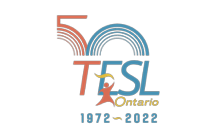Although there are numerous visual aids that the modern ESL teacher can use in the classroom, including Smart Whiteboards, overhead projectors, PowerPoint presentations, and Chromecast, the board is still an effective and valuable teaching tool that can be used in many different ways at different stages in a lesson.
Even in classes where the teacher uses a PowerPoint presentation or any other type of technology, there could be a need for jotting down some words on the spot to show spelling or pronunciation, or simply for underlining some key concepts on the board.
Advantages of Using the Board
In her book Using the Board in the Language Classroom (2002), Jeannine Dobbs points out that ‘using the board in our classes has many advantages: it encourages students to remember what they hear, allows teachers to illustrate and clarify information, and increases the students’ interest about the input they receive’.
When to Use the Board
The board can be used in many different ways and stages in an ESL lesson. You can use it in a warm-up section when you want the class to brainstorm ideas or words related to a word or question, or in the practice stage when you want to give feedback after your students have completed a chart with missing information.
In a revision session, the board can be useful when you want to explain the structure and use of a tense through a tense timeline with examples, or when you want to present vocabulary and you write a word or draw a picture to elicit meaning. You may also want to use it to give feedback or summarize the main teaching points of the lesson.
How to Use the Board
There is no doubt that using the board in the classroom has many advantages and uses. However, it is also important to plan how to organize the board in advance, especially if you are a beginner teacher. When preparing your lesson, visualize or make some notes on how you would like the board to look at the end of the lesson or a period. This will help you organize your ideas, know where you will write different data on the board, and it will also help you imagine what your students will see when they look at the board.
It is essential to use the board in a competent and efficient way. One of the reasons for saying so is that your students will copy what you have written on the board in their notebooks, even if you do not tell them to do so. If the board is too crowded or your handwriting is too scruffy, they may copy the incorrect words or information.
Using the Board in Different Stages of a Lesson Plan
Engage or Create Interest/Warm-Up Step
Start by writing a word or phrase on the board and get the students to brainstorm ideas related to the word or the topic of the lesson. It could also be a sentence or a problem for them to solve.
Write down all of their ideas or the ones that you need for the next step in the lesson. You can record the answers by using a chart, a mind-map, or a list. Whatever strategy you use, make sure that the board looks neat and organized. If you want to make the beginning of the lesson a bit more interactive and student-centered, you can get the students to come to the board and complete the list or the mind-mapping chart by themselves. However, this strategy may not work if your class is too big or too noisy.
During the Engage or Create Interest step, you may also want to review vocabulary. You can use the right side of the board for vocabulary that has been previously taught (old information) and leave the center of the board for the new words or topic (new information).
Presentation of the Target Language
In this section, you will probably get your students to listen to a recording, watch a video clip, or read a text to expose them to the target language in context. You may use a textbook or some handouts for this section. Writing on the board will not be necessary at this point unless you want to show the students a word or phrase or maybe a gist question to answer.
The presentation stage of a lesson is the stage where the board is used more often, especially, in the systematization of the new topic. In the practice or production stages, you may use the board for writing a word to show spelling or reinforce meaning, some instructions, or the page of the textbook.
Elicitation of the Target Language Through Concept Questions and Systematization
This is when systematization on the board starts. After you have exposed the students to the target language in context, you will now want them to pay a closer look at the topic of the lesson. Through concept questions, you will elicit the meaning of words or the function and structure of the topic you are teaching. While doing so, write their answers down and start summarizing the keywords or parts of a sentence on the board.
Use colour markers or different colour chalk to underline or highlight the most relevant information you are trying to show them. This board synopsis should look neat and organized as they would probably like to write down this useful information in their notebooks.
Take an accredited TESOL course with OnTESOL! Fully accredited since 2003! Includes job assistance and lifetime access to the OnTESOL Job Board






